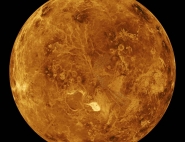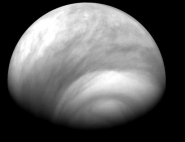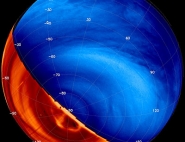Aspera-4
(Analyser of Space Plasmas and EneRgetic Atoms)
ASPERA-4’s main objective was to study interactions between the Venusian atmosphere and solar wind in order to understand the mechanisms which may have caused the escape of water vapour and other light gases into space a long time ago. The instrument used a technique called ENA (Energetic neutral Atoms) to visualise neutral and ionised gas concentration around Venus.
ASPERA-4 was a set of 4 sensors designed to characterise neutral and charged particles in the planet’s vicinity:
- the Neutral Particle Imager (NPI), designed to measure total neutral particle flows in high angular resolution (but without discriminating by mass or energy);
- the Neutral Particle Detector (NPD), which measured neutral particle flows in low angular resolution but high mass/energy resolution;
- the Electron Spectrometer (ELS);
- and the Ion Mass Analyser (IMA).
A digital processing unit (DPU) completed the set. With the exception of the IMA, all subsystems were mounted on a mobile platform so ASPERA-4 could have 4π steradian coverage on the 3-axis stabilised spacecraft.
The instrument was developed under the supervision of the Swedish Institute of Space Physics (IRF) in Kiruna, Sweden, who was the prime contractor. French laboratory IRAP (former CESR) in Toulouse contributed to ASPERA-4 development by providing the following services:
- Purchasing, calibrating and supplying microchannel plates (MCP) for the NPI. The MCPs’ specifications are detailed in the table below.
- Study, manufacture, documentation and tests of the card converter DC/DC low tension (prototype, electric model, flight models,spare model).
- Studying, manufacturing, documenting, and testing electronic scanner control boards (prototype, electronic model, flight model, and spare model).
- Designing and performing series of control tests for these boards.
- Carrying out a digital study for designing and modifying the IMA spectrometer sensor head, and calibrating it a vacuum chamber.
IRAP also provided logistical support to the Swedish Institute of Space Physics (IRF), Interspace, and Astrium, for deliveries, tests, and instrument integration on the satellite.
| Sensor | Micro Channel Plate (MCP): - one 99 mm disc with 15mm interior hole - 2 half discs stacked on top of the first disc | |
| Manufacturer | Photonis | |
| Disc | Ø Thickness | 99 mm 1.5 mm ± 0.05 mm |
| Channels | Ø Tilt | 25 µm 8° ± 1° |
| Plating | Type | Standard NiCr |
| Impedance | Disc ½ disc | 5 to 25 M 10 to 50 M |
| Polarisation | Nominal | 1,200 V |
| Gain | @ 1200 V |


